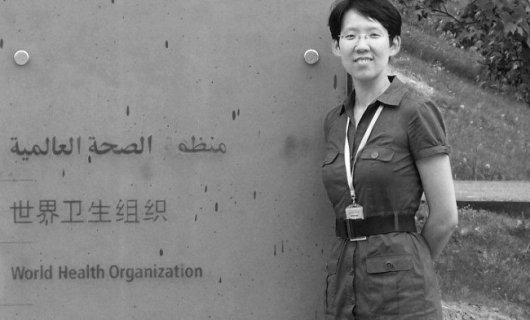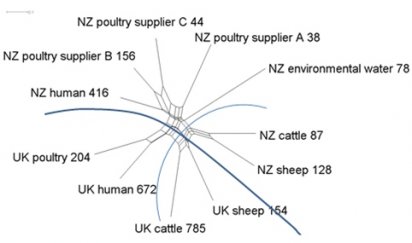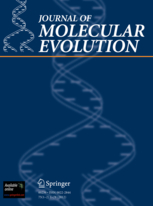Exploring the evolution of Campylobacter
by Shoukai Yu

SHOUKAI YU
PhD Candidate mEpiLab
The genus Campylobacter is a major cause of human gastroenteritis worldwide; therefore, understanding the evolution of Campylobacter could have important implications. My doctoral studies took a multidisciplinary approach to investigating the evolution of Campylobacter by focusing on the factors which affect genetic exchange. To do this I combined the latest developments from the fields of statistics, genetics, bioinformatics and computer science
The importance of recombinationIn order to understand how Campylobacter evolves, I proposed a mathematical method to estimate the relative rates of recombination and mutation in the generation of new alleles that lead to single locus variants (SLVs). This work revealed that the process of recombination provides a far stronger driving force than mutation in the evolution of Campylobacter jejuni and Campylobacter coli. Furthermore, this model demonstrated that purifying selection also plays an important role in the evolution of Campylobacter. For comparison, I also used this model to examine the role played by recombination in the evolution of other bacteria, which confirmed that recombination is an important process for creating diversity in closely related isolates.
Phylogenetics and geographical isolationI also applied a range of phylogenetic and population genetic tools to investigate the effect of geographical isolation on the evolution of Campylobacter by comparing datasets from two geographically separated countries: New Zealand and the United Kingdom. This is the first time this has been attempted. Analysing sequence data at different levels of resolution provided evidence that geographical isolation affects the evolution of Campylobacter genotypes over short time-scales, but that this effect diminishes over longer time-scales. Furthermore, this analysis estimated the time for divergence of NZ-specific lineages of Campylobacter strains.

Figure 1. A Neighbour Net of a 1-PSI matrix for sequence type (ST) frequency. The isolates have been grouped by host species and country of origin, with the number after each host source representing sample size. The thick blue line shows the genetic separation between isolates from New Zealand and those from the UK; and the thin blue line demonstrates genetic differences in the isolates originating from ruminant hosts compared to those originating from human and poultry host sources.
New Zealand-specific CampylobacterCampylobacter jejuni sequence type 474 (ST-474) is responsible for more than a quarter of human campylobacteriosis notifications in New Zealand, but intriguingly this strain has been rarely identified in other countries. Understanding the clonal relationships of ST-474 strains is helpful for inferring the origin and the evolutionary mechanisms of Campylobacter. In this piece of work, I accessed the full genome sequences of 59 isolates of Campylobacter. I applied a range of phylogenetic tools to a targeted gene reference set to compare estimations of the clonal genealogy inferred for Campylobacter datasets.
The implications of my workThe findings of my doctoral studies have implications for: identifying the origin of Campylobacter; developing effective disease intervention strategies; predicting the emergence of pathogens; and reducing the occurrence of campylobacteriosis in the food supply chain.
Shoukai Yu is in the final stages of writing her doctoral thesis. She was supervised by Professor Nigel French and Dr Patrick Biggs (IDReC), Dr Barbara Holland (University of Tasmania), and Professor Paul Fearnhead (Lancaster University). A link to the first paper to be published from her doctoral studies is available here:
Yu S, Fearnhead P, Holland B, Biggs P, Maiden M, French N. Estimating the Relative Roles of Recombination and Point Mutation in the Generation of Single Locus Variants in Campylobacter jejuni and Campylobacter coli. Journal of Molecular Evolution 74, 273-80, 2012
During her doctoral studies Shoukai was awarded a 3-month secondment to the World Health Organisation where she worked with the independent Expert Review Group (iERG).Shoukai has now left New Zealand for Nashville, Tennessee where she is starting as a Postdoctoral Researcher at Vanderbilt University. Her research will be focusing upon identification of genes involved in human diseases. We wish Shoukai every success and look forward to watching her own career evolve.
